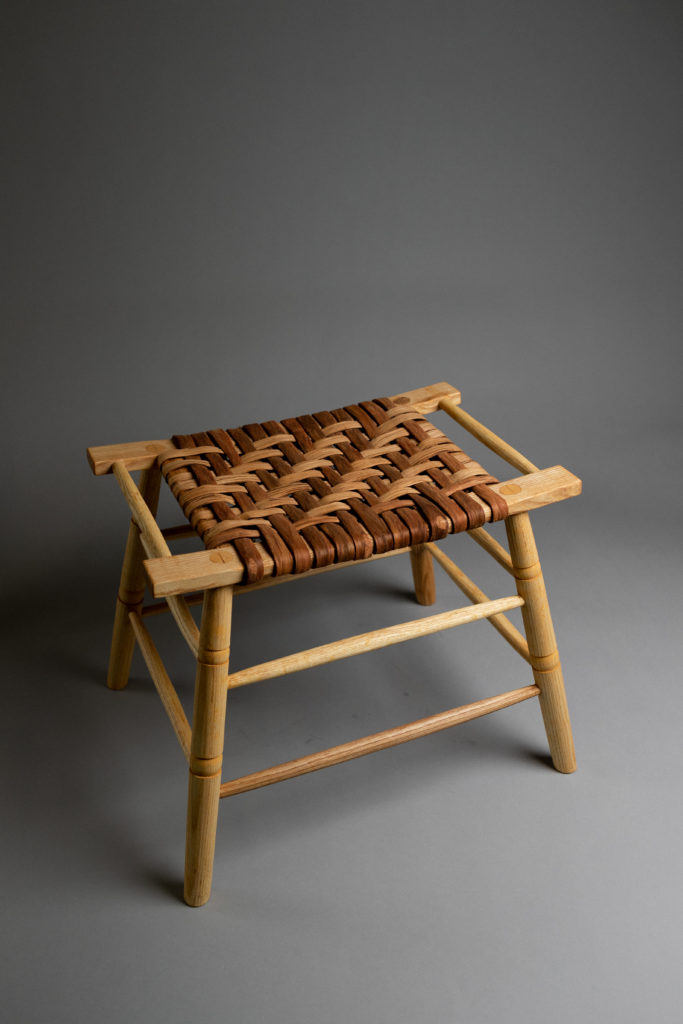October 18-20, 2021
Made of ash or oak, which will come directly from our Berea College forest. Much of traditional rural Appalachian furniture uses ornamentation and “extra” details sparingly. Likewise with the stool. The beads on the legs add visual interest, though the maker can omit them if they prefer a cleaner look.
The tool design was influenced by the work of Chester Cornett and other traditional Kentucky chairmakers. In particular, a beautifully detailed tall stool by Cornett to a KY author sparked the desire to create something similar.
We will use greenwood techniques and joinery (dried rungs fit into a “wet” post).
Hickory bark provided with the class.
In this class we will:
-
Split parts from a section of a log
-
Shape parts at the shavehorse with drawknives and spokeshaves
-
Make the seat rails – which will be heated/steamed and bent in a form
-
Drill out the leg angles using sight lines
-
Fit and assemble the stool
-
Discuss weaving materials options and finish choices
Participants need to bring a small kit of tools for the class (list provided and we’ll have extras of tools if your kit isn’t complete).
Greenwood Stool Tool List:
Needed:
- Drawknife
- Spokeshave (Flat or Round bottomed, flat will be a little easier)
Recommended: (please bring – especially the first eight on this list – but don’t run out to purchase if you don’t own one yet)
- pencil
- utility or pocket knife
- tape measure
- sliding bevel guages
- tenon or dovetail saw
- sharp chisel
- pocket knife or (small) straight carving knife
- claw hammer
- framing square or 24″ straight edge
- deadblow or lump hammer
- block plane
- compass (scribe)
- card scraper
- flush cut saw
We’ll use/cover, but not needed:
- froe, maul and wedges
- hatchet
- power tenon cutters
- bevel setting gauge or protractor (a way to find angle for the sliding bevel gauge)












